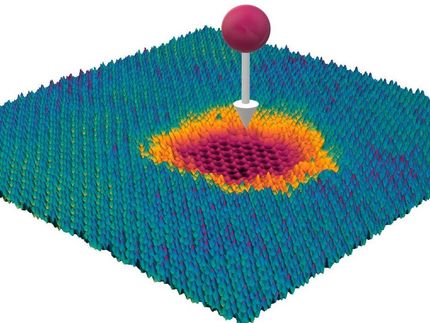Polymers in two dimensions
Advertisement
The ultrathin material graphene is the current favourite of many materials scientists. ETH researchers have now managed to create a synthetic polymer that is almost as thin. This is the first time that a flat synthetic polymer has been produced and its structure analysed using X-ray crystallography.
Polymers are materials consisting of many connected and repeating identical molecules. In the past, polymers created and developed by chemists were usually long one-dimensional chains. The textile fibre nylon is one example of this. Polymer chains can also be linked together to create three-dimensional irregular networks, as with synthetic resins or silicone, for instance.
However, polymers with repeating units that join up in exactly two dimensions are a completely new development. Researchers believe this will give rise to interesting new applications, since it will enable synthetic, nanometre-thin sheets to be produced that are similar to graphene, the material which is currently such a major talking point.
Cylinders with wings
Materials scientists in the group headed by Dieter Schlüter, a professor at the Polymers Institute, have been working on the development of such polymers for the past few years. They are the same scientists who created the very first flat synthetic polymer two years ago. However, the structure of this material could not be clearly identified using X-ray crystallography. At the same time as an independent American group, the ETH researchers have now managed to create another 2D polymer whose structure can be elucidated, thereby providing the first direct evidence that synthetic two-dimensional polymers actually exist.
In the case of the ETH researchers' 2D polymer, the individual molecule (the monomer) was shaped like a nanometre-sized cylinder with three wings. To create flat polymers, the researchers had the monomers crystallised, causing them to arrange themselves in a regular crystal lattice. When the scientists irradiate the crystals with UV light, the wings of the different monomer units react with one another and form a fixed chemical bond. The result is a sheet-like crystal consisting of individual layers stacked on top of each other. When the researchers mix this polymer crystal with a strong acid, it swells up and the individual layers can be separated from one another.
Graphene supplement
It is still too early to be talking about specific applications for the new, synthetic nano sheets, says Max Kory, PhD student in Schlüter's group and lead author of the publication. "We are currently in the process of determining its characteristics," he explains. But he does believe the material is extremely functional. An interesting facet, for example, is that the crystal can be converted from monomer into polymer and back again relatively easily by subjecting it to UV light. It is therefore conceivable that in the same way as photosetting, UV light could be shone onto individual regions of the crystal but not onto others. Freely structured polymer sheets could therefore be created in this way. "Because of these additional characteristics, we do not consider our material to be a replacement for graphene. Rather, it is a supplement."
So far, chemists have only managed to produce a few grams of the material. Together with an industry partner, they are now planning to produce it on a kilogram-scale, as well as looking into its characteristics and potential applications in detail.
































































